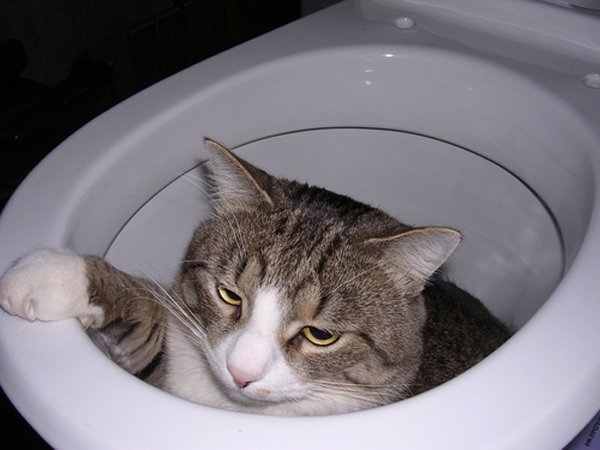The Consequences of Flushing Cat Poop Down Your Toilet - Safeguard Your Pipes
The Consequences of Flushing Cat Poop Down Your Toilet - Safeguard Your Pipes
Blog Article
Nearly everybody may have their own way of thinking when it comes to Can You Flush Cat Poo or Litter Down the Toilet?.

Introduction
As pet cat proprietors, it's important to bear in mind exactly how we dispose of our feline good friends' waste. While it may seem convenient to purge cat poop down the commode, this method can have harmful consequences for both the atmosphere and human health and wellness.
Alternatives to Flushing
The good news is, there are safer and much more accountable means to take care of feline poop. Take into consideration the adhering to choices:
1. Scoop and Dispose in Trash
The most typical method of taking care of pet cat poop is to scoop it right into a naturally degradable bag and throw it in the garbage. Be sure to use a committed clutter scoop and throw away the waste promptly.
2. Use Biodegradable Litter
Opt for naturally degradable cat clutter made from materials such as corn or wheat. These litters are environmentally friendly and can be safely dealt with in the trash.
3. Hide in the Yard
If you have a backyard, take into consideration hiding feline waste in an assigned location far from vegetable gardens and water sources. Make certain to dig deep sufficient to avoid contamination of groundwater.
4. Set Up a Pet Waste Disposal System
Invest in a pet dog garbage disposal system particularly made for pet cat waste. These systems make use of enzymes to break down the waste, minimizing odor and ecological effect.
Health and wellness Risks
Along with ecological concerns, flushing cat waste can also position health and wellness threats to human beings. Cat feces may contain Toxoplasma gondii, a parasite that can create toxoplasmosis-- a potentially severe illness, specifically for pregnant women and people with damaged body immune systems.
Environmental Impact
Flushing pet cat poop presents hazardous microorganisms and parasites right into the supply of water, posing a significant threat to aquatic environments. These contaminants can adversely influence marine life and concession water quality.
Conclusion
Accountable pet dog possession extends beyond offering food and sanctuary-- it also involves correct waste management. By refraining from purging cat poop down the toilet and choosing alternative disposal approaches, we can lessen our environmental footprint and safeguard human wellness.
Why Can’t I Flush Cat Poop?
It Spreads a Parasite
Cats are frequently infected with a parasite called toxoplasma gondii. The parasite causes an infection called toxoplasmosis. It is usually harmless to cats. The parasite only uses cat poop as a host for its eggs. Otherwise, the cat’s immune system usually keeps the infection at low enough levels to maintain its own health. But it does not stop the develop of eggs. These eggs are tiny and surprisingly tough. They may survive for a year before they begin to grow. But that’s the problem.
Our wastewater system is not designed to deal with toxoplasmosis eggs. Instead, most eggs will flush from your toilet into sewers and wastewater management plants. After the sewage is treated for many other harmful things in it, it is typically released into local rivers, lakes, or oceans. Here, the toxoplasmosis eggs can find new hosts, including starfish, crabs, otters, and many other wildlife. For many, this is a significant risk to their health. Toxoplasmosis can also end up infecting water sources that are important for agriculture, which means our deer, pigs, and sheep can get infected too.
Is There Risk to Humans?
There can be a risk to human life from flushing cat poop down the toilet. If you do so, the parasites from your cat’s poop can end up in shellfish, game animals, or livestock. If this meat is then served raw or undercooked, the people who eat it can get sick.
In fact, according to the CDC, 40 million people in the United States are infected with toxoplasma gondii. They get it from exposure to infected seafood, or from some kind of cat poop contamination, like drinking from a stream that is contaminated or touching anything that has come into contact with cat poop. That includes just cleaning a cat litter box.
Most people who get infected with these parasites will not develop any symptoms. However, for pregnant women or for those with compromised immune systems, the parasite can cause severe health problems.
How to Handle Cat Poop
The best way to handle cat poop is actually to clean the box more often. The eggs that the parasite sheds will not become active until one to five days after the cat poops. That means that if you clean daily, you’re much less likely to come into direct contact with infectious eggs.
That said, always dispose of cat poop in the garbage and not down the toilet. Wash your hands before and after you clean the litter box, and bring the bag of poop right outside to your garbage bins.
https://trenchlesssolutionsusa.com/why-cant-i-flush-cat-poop/

As a keen reader on How to Dispose of Cat Poop and Litter Without Plastic Bags, I imagined sharing that excerpt was essential. Enjoyed our write up? Please share it. Help others discover it. Many thanks for your time. Please come by our site back soon.
Quote Report this page